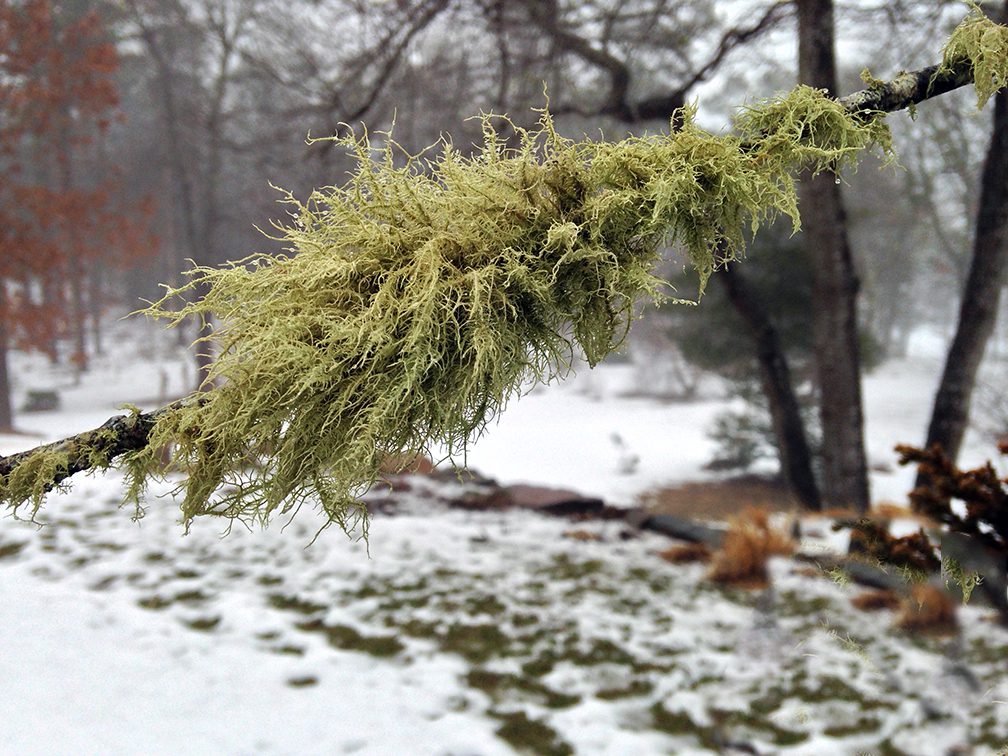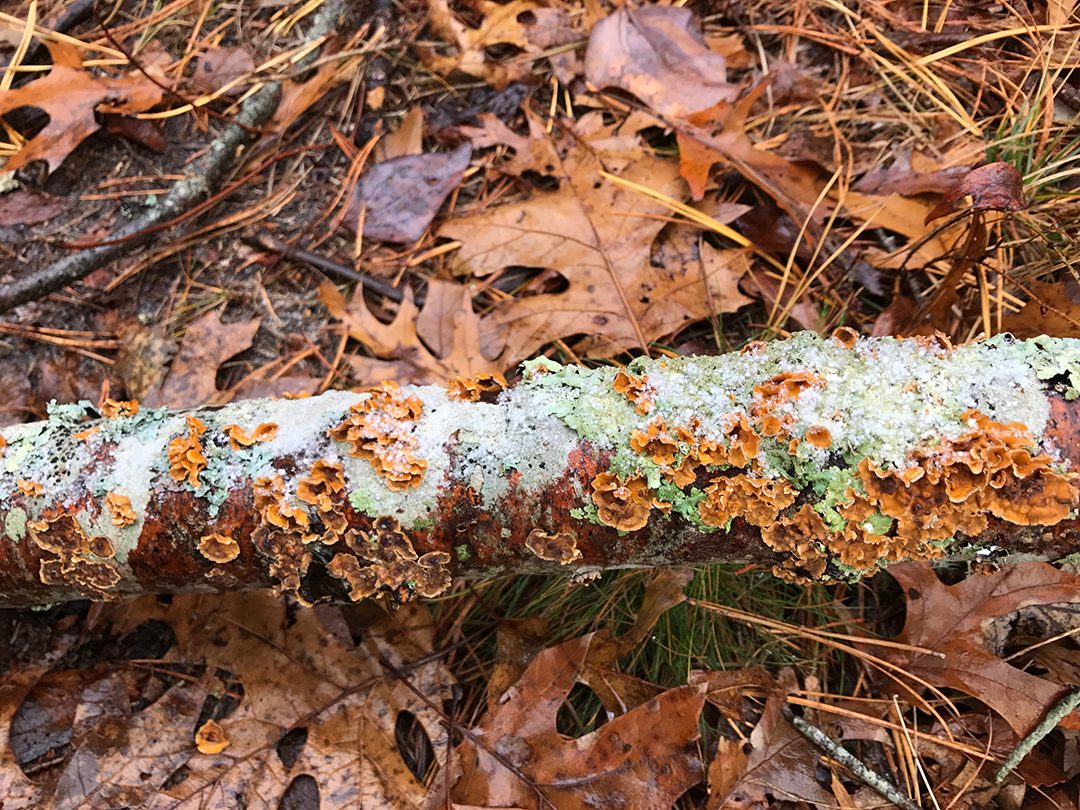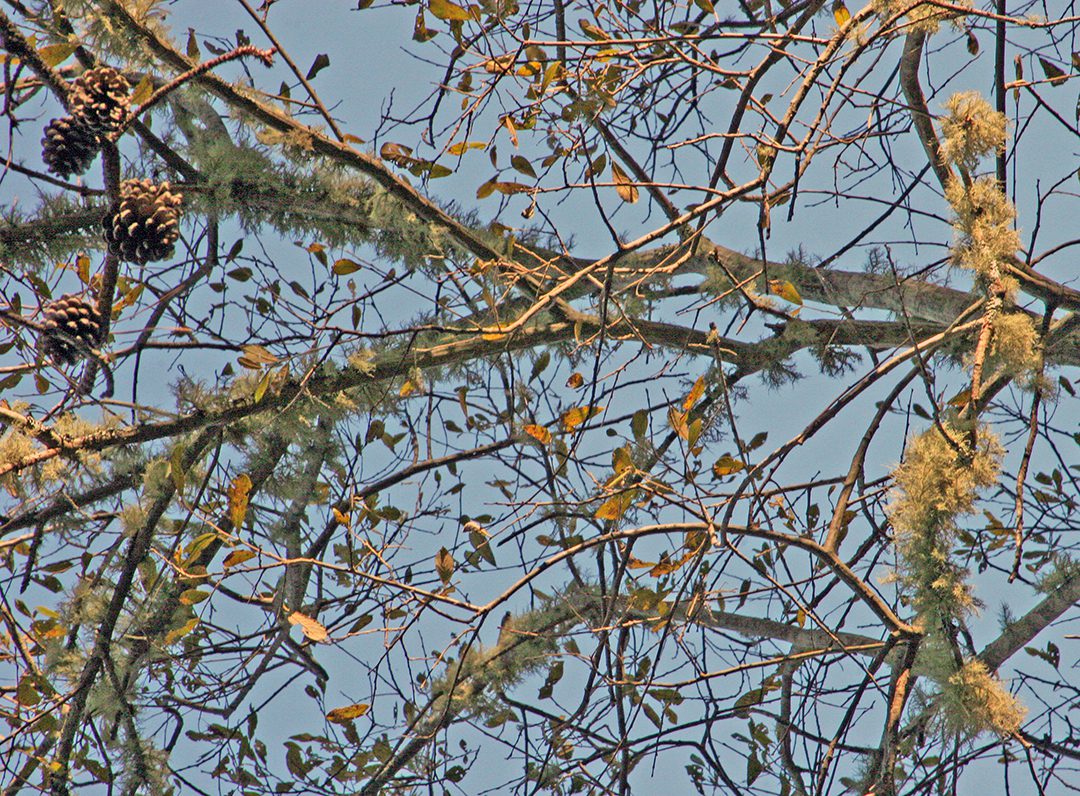Is That Green Moss Killing My Trees?
Is That Green Moss Killing My Trees?
Many of our customers worry that the green fuzz that is on the branches of their shrubs and trees is hurting their plants. People often notice that the tops of a tree have died and there are greenish, furry looking growths on those branches. This is lichen and many wonder if they should be scraping it off, or otherwise trying to kill it.
Some call it moss, but what they are seeing isn’t moss but a lichen. Lichens are two (and sometimes three) different organisms that form a mutually beneficial relationship with each other in order to survive. The most dominant is a fungus which forms the part of the lichen you see. Inside of the fungus is an algae, and sometimes a cyanobacteria. The algae contains nutrients and photosynthesizes as plants do, and the fungus uses those nutrients while it protects the algae.
A cozy relationship for the fungus and algae, certainly, but is it hurting your plants? The short and sweet answer is no, lichen does not injure your shrubs and trees.
When we see the tops of trees that have bare branches covered with lichen, we’re seeing damage done to the tree by something else. Some trees have been defoliated so frequently by winter or gypsy moth larvae that the tops die back. Other plants have been stressed by drought, salt spray or other substances. In any of these cases the lichen takes advantage of this valuable real estate and grows on the dead or dying branches. Lichen can grow on live wood too, but since it depends on photosynthesis to stay alive, it doesn’t tend to flourish on trees and shrubs with a thick, healthy canopy that blocks the sun.
People notice lichen the most in the spring and fall when the air is damp and the lichens swell. Since there aren’t leaves on the plants to hide it at these times of year, the lichen can be quite prominent. Removing the lichen or trying to kill it can actually do more harm to your shrubs and trees than leaving it alone, so it’s best just to wait until the foliage comes back to hide it.
Get to like your lichen…since these organisms don’t flourish in polluted air, the Cape’s lichen shows us that our air is of good quality.

This type of lichen is very common on Cape Cod. It’s often called “old man’s beard.”

Lichens aren’t always green. You’ll see them in a variety of shapes and colors including rust, yellow, and white.

Although lichen doesn’t hurt your trees, it can be a sign that the tree is already being stressed by a variety of conditions. Make sure your trees are deeply watered once a week in times of drought. Treat early for winter moth and gypsy moth larvae, and don’t over fertilize. An application of compost, composted manure or the trees own chopped leaves on the top of the soil under the canopy helps trees to stay strong and healthy.
Read more about Lichen in this publication from the Arnold Arboretum.
Subscribe To Our Newsletter
Sign up for our weekly email about sales and events.
